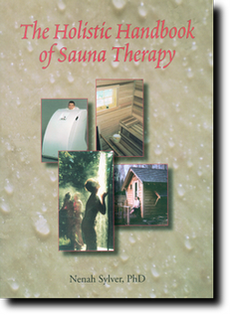Introduction, Sauna Book
The Holistic Handbook
of Sauna Therapy
by Nenah Sylver, PhD
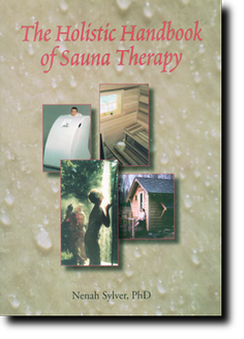
available as a Softcover
and eBook
in many formats
Introduction
It is more elegant to pontificate than it is to sweat.
—Harold Evans, British Journalist and Publisher,
at a memorial service for journalist David Blundy, January 24, 1990
In the year 2000, archaeologists from Boston University trekking through the lowlands of Central America came upon an unusual structure. In an ancient, simple Mayan village of thatched roofs, where natives had grown corn and manioc and hunted deer and wild pig, someone had taken the trouble to construct a partially closed building with a domed roof and a fire pit.
What could it be? the excavation team wondered. This building was in the center of the village, occupying a position of obvious importance. But it was only eight feet wide—surely not large enough for a meeting place, nor comfortable enough for a home of even just one occupant. In one corner of the hut the walls were red and gray, obviously burned by a very hot fire of long duration. For what purpose would such a fire be needed? Then the team saw another puzzling sight: near the ash deposits of the fire pit, low benches of stone had been erected. Obviously, whoever had built this structure had wanted to make sure that the furniture inside would not burn up. But why would someone want to sit so close to a roaring fire—in tropical heat of 90° Fahrenheit (32.2° Celsius), or higher?

Perplexed, the archaeologists tossed ideas back and forth one day as they erected a tarp over part of the excavation site to protect themselves from the fierce sun. Suddenly, “a chance remark suggested the answer.” As one of the researchers wrote later, “It was hot and humid—like a sauna, someone said—and we suddenly realized what we had was a pib na, or sweat house.” This was a historic find, the remains of “the earliest known Maya sweat house, a place for therapy and ritual”— built 3,000 years ago.
Throughout history, people all over the world have gone out of their way to build heating chambers of various sizes so they could go inside and sweat. The temperatures used for these rooms range between 175°F and 205°F (79.4°C and 96.1°C), although sometimes the temperature climbed even higher. Today, we call this practice of therapeutic body heating, as well as the space in which the heat bath is located, sauna.
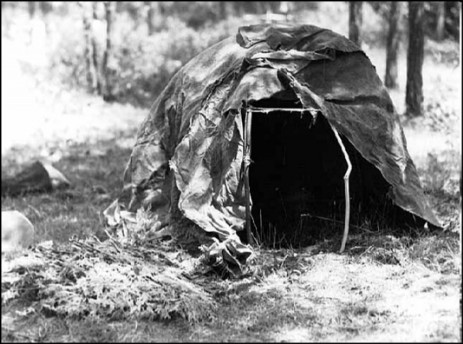
Why would anyone enter a cubicle, sometimes the size of a small closet, to deliberately perspire? In some cultures in this modern age, people in so-called polite society have an aversion to sweating, and will do anything to hide it. Yet body heating is enjoying a tremendous renaissance now, and the reason is simple: people want to experience the tremendous relaxation and health benefits that it provides.
Although sauna bathing is one of the oldest therapeutic modalities in human history, our forebears did not always understand exactly how or why it works. Now, with modern scientific methods available, we are privileged to know in detail what our ancestors sensed intuitively: that when used properly, heat—a major life-giving force of nature—will heal.
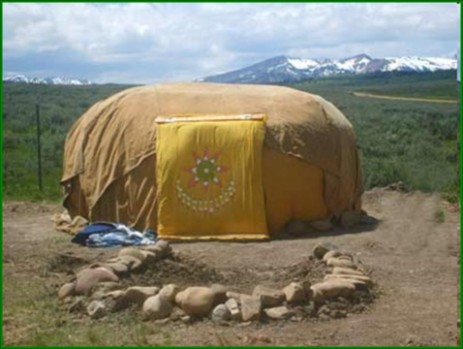
“The History of Saunas,” the theme of Chapter 1, introduces sauna bathing as both a cultural and medical phenomenon. When I began my research, I had no idea that body heating had so many forms, or so many rituals connected to it. You may be as surprised as I was, at how various cultures have used the sauna, and under what circumstances—and how the practice was eventually adopted as a medical procedure by some sophisticated physicians. “How and Why We Sweat,” the topic of Chapter 2, describes in detail how and why the body produces sweat, and explores why deliberate sweating can induce such powerful and positive results. Chapter 3, “What We Sweat, and Why We Need to Get Rid Of It,” discusses toxins—which take the form of biological wastes, heavy metals, and organic chemicals—and why it’s a matter of life or death to pay attention to them.
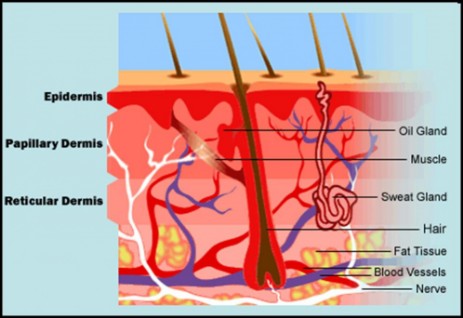
Chapter 4, “The Three Types of Heat,” addresses the mechanics of heat transfer and how these principles apply to traditional and modern sauna methods. Both dry and moist heat are explored. Chapter 5, “Construction of the Sauna,” focuses on the materials used for the heat source and for the sauna chamber itself. Taken together, Chapters 4 and 5 will help you to decide which method of body heating is best for you, and to select the appropriate sauna building materials and heating system that will deliver the desired results.
Chapter 6 provides valuable information on “Who May Use the Sauna and Who Should Not.” Whether you are being treated by a physician for chronic or acute illness, have general wellness issues, or simply want to use the sauna to relax, you need to understand how heat affects the ways in which your body functions. There are actually very few conditions that contraindicate the use of a sauna. However, since this therapy might not be suitable for everyone all the time, it is important to know when not to heat the body.
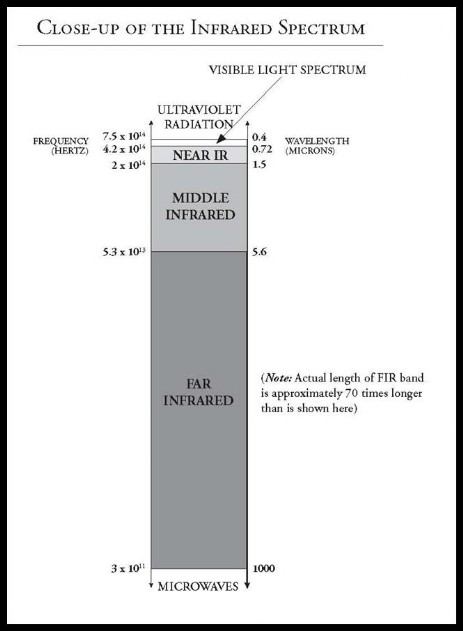
Chapter 7 provides step-by-step instructions on “How to Take a Sauna.” Knowing how to use the sauna can make the difference between having a pleasurable and healing experience or possibly hurting yourself. This chapter is packed with practical advice gleaned from data collected over many years by doctors, clinics, spas, and sauna manufacturers. Our “how-to” focus continues in Chapter 8 with “Detoxification Programs for Getting Well and Staying Well.” You will learn what to expect when the sauna therapy starts to work, and get an overview about some successful detoxification programs used by respected doctors, some of them experts in the environmental medicine field.
A number of health care professionals as well as laypeople feel that a sauna session is incomplete without the addition of ozone. If you are curious about ozone and its benefits, or how to use it in conjunction with sauna therapy, read Appendix A, “A Brief Summary of Ozone.” If you want to know where to find a doctor, clinic, or spa that features some form of body heating as part of an overall treatment regimen or general wellness program, see Appendix B, “Resources.” Appendix B also contains a listing of sauna manufacturers, spa and service organizations, and products related to sauna therapy. (The entries were carefully culled from many sources. If you are a manufacturer, doctor, or other service provider and feel that you should be included in the next edition of this book, please contact me.)
Finally, the Bibliography provides an extensive list of books, journal and magazine articles, and a few websites devoted to the science of body heating. Although some of these primary sources date back to the 1800s, the scientific methodology and degree of accuracy they display is impressive; these materials have as much relevance today as they did one hundred years ago.
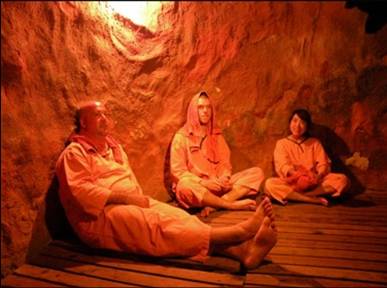
This book covers all aspects of sauna therapy—as well as advice on how to choose a sauna suited to your needs, based on the materials of which it is constructed, and how those materials influence the quality of the sweat. But instructions on how to build your own sauna are not included. If you are handy with tools or need to make your own unit due to financial considerations, instructions for the design and construction of saunas can be found in Marilyn McVicker’s Sauna Detoxification Therapy: A Guide for the Chemically Sensitive, in Bert Olavi Jalasjaa’s Art of Sauna Building, and in Mikkel Aaland’s Sweat (whose chapter “Build Your Own Sauna or Sweatlodge” is reproduced on Aaland’s website and sold as a separate booklet). In addition, Dr. Lawrence Wilson offers plans for an inexpensive infrared light bulb heating unit and sells a kit of hard-to-find parts. See Appendix B for detailed contact information on all of these do-it-yourself ventures.
This book is devoted primarily to the obviously physical aspects of wellness. However, since my background is also in psychology, I want to comment here on the difference in attitudes toward body functions that often exist between Americans and people in other countries. These differences were hard to miss as I immersed myself in the multicultural aspects of body heating. Quite a few other cultures are much more comfortable with sweating and nudity than are Americans. The reasons for our cultural aversion to natural bodily processes and odors are many—some understandable, others not—but we as a culture pay a steep price for indulging in this body hatred, for by denying ourselves the right to sweat, we keep ourselves ill.
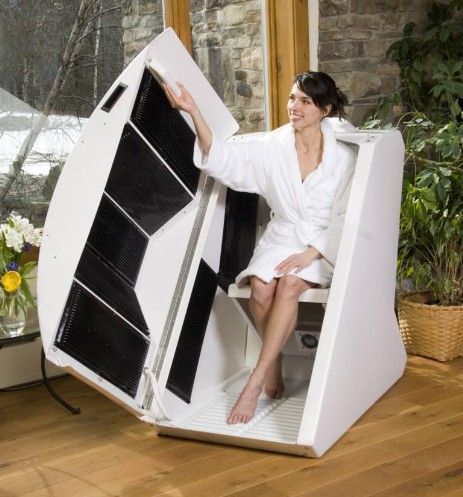
The aversion to sweating is often related to a negative attitude toward nakedness, and the repression of sexuality in general. I was surprised and a bit saddened to discover how many people do not use a sauna because it would involve getting undressed in front of strangers (unless one can afford to purchase a sauna to use in the privacy of one’s own home). Sauna bathing, even if done in a mixed gender group, should never be confused with flirting, foreplay, an orgy, or some other sexual behavior. A sauna chamber is sacrosanct to people who use it. In fact, combining sex with sauna bathing is considered an insult to—and distortion of—the entire sauna culture. Not surprisingly, people raised to incorporate sauna therapy into their daily lives have a much more relaxed and natural relationship with their bodies than those who do not. (There are studies that show this, but it should be self-evident from simple observation.) Americans would benefit greatly—and would certainly enjoy their sauna experience more—by adopting the more relaxed attitude of our European friends about group nudity.
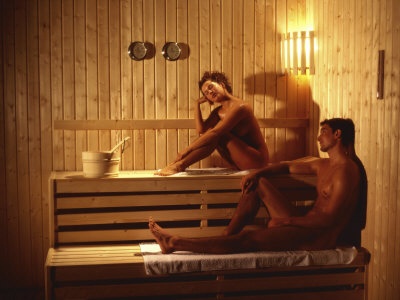
A few editorial comments: first, out of respect for both American readers and those across the oceans, temperature readings are given in both Fahrenheit and Celsius. Second, in the text that I write I keep spelling, numerical notation, and capitalization consistent, according to modern rules of grammar and punctuation. However, when quoting other authors, I leave their passages alone and do not make corrections for consistency; so the quoted remarks do not always correspond to the style of my own text. Third, when referring to people suffering from various health problems, I use terms like “people with cancer” or “people with multiple sclerosis” as opposed to “cancer patients” or “multiple sclerosis patients.” Although this can be a bit cumbersome, I avoid the word “patient” because all too often it reflects and reinforces a hierarchical medical model that relegates the seeker of health services to a role that is subordinate to the doctor. Since one theme of this book is self-empowerment, I want the words I use to reflect this.
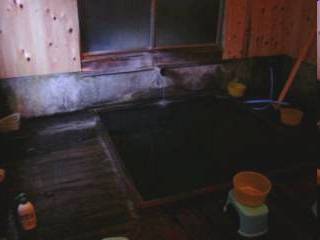
The ancient and respected tradition of sauna bathing has survived because it works. In the United States, the Food and Drug Administration approves saunas as therapeutic devices, and some insurance companies even reimburse claimants for the cost of sauna therapy or the saunas themselves. But as with any modality that promises relief from what ails you, it is wise to use some common sense by learning what sauna therapy actually can and cannot do, instead of blindly believing any affirmative claim made by a sauna manufacturer—or any negative comment made by a detractor.
The Holistic Handbook of Sauna Therapy is designed to help people who are considering sauna therapy, but first want to educate themselves about why it is effective, and how it may be used safely. It has been written for both the health care professional and the layperson—so that anyone can, with a little effort, improve their health and the health of those they care about. This book is also directed to those who already use saunas, and want to enrich their experience with practical suggestions on how to make the most of what they are already doing. It serves as a brief introduction to holistic health as well, so that even if you don’t have access to a sauna, you can still learn what detoxification really means, and why it’s important. And, it is hoped, that based on what you learn, you’ll be tempted to try a sauna at least once.
The ancient Greek physician Hippocrates is thought to have declared, “Give me a chance to create fever and I will cure any disease.” An exaggeration? Maybe not. This statement is closer to the truth than one might think—especially today, with high levels of pollution contributing to problems far more complex than anyone might have imagined two millennia ago. In the following pages, I will show you how sweating can make a huge difference in the way you feel—whether you are sick or well.
Nenah Sylver, PhD
Stone Ridge, New York
February 2004

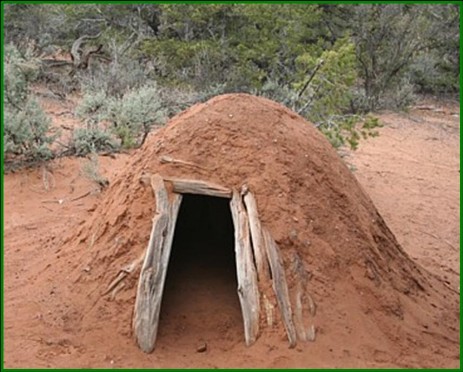
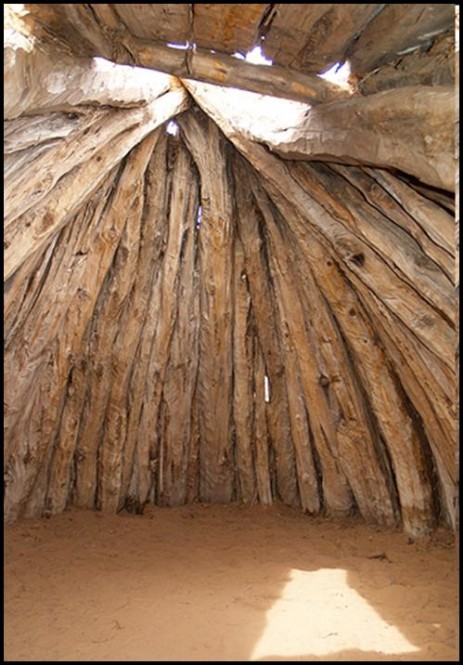
.
